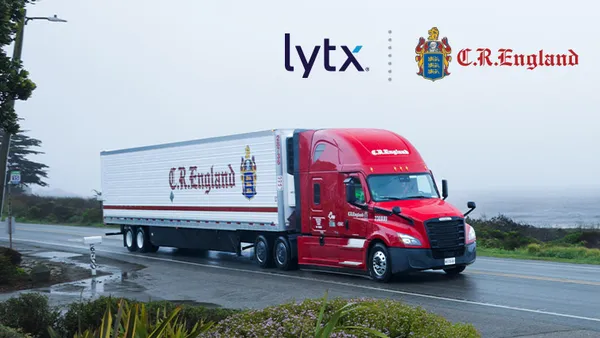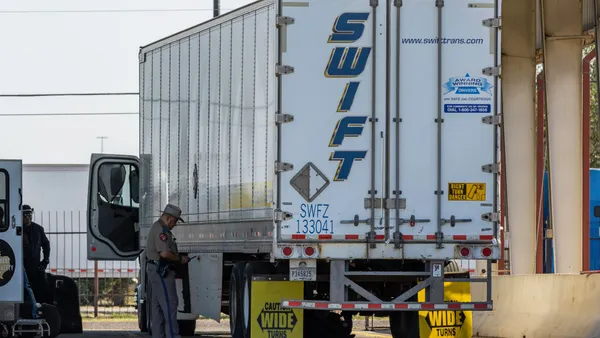As freight demand declines and budgets tighten, hiring and retention are expected to remain a challenge for trucking in 2023, according to executives of three top U.S. trucking associations.
Leaders of the Truckload Carriers Association, the American Trucking Associations and the Owner-Operator Independent Drivers Association emphasized during interviews with Transport Dive that labor must be a focus for the industry and regulators this year.
“Workforce challenges have not gone away,” TCA President Jim Ward said. “They continue to be an issue for for our industry and our members. ... We're going to continue to be confronted with this challenge, just from attrition alone.”
As retirements and attrition take their toll, introducing trucking to younger recruits as a career option and other creative strategies are essential for carriers to have enough drivers, technicians and other personnel to keep their operations rolling. Carriers, associations, a federal contractor and multiple retailers are among those exploring solutions.
Fleets also need the help of state and federal government agencies to grow their employee ranks, and the industry plans to continue opposing measures like California’s AB5 law and other state or federal regulations prohibiting independent contractor arrangements on which many fleets and owner-operators rely.
Eyes on attrition, and efforts to remedy it
Many carriers’ drivers are roughly 48 to 52 years old, and future retirements alone are expected to exacerbate staffing woes, Ward said. Retirements are a top contributor to the second-highest number of unfilled driver jobs on record, according to the ATA.
With technicians and maintenance workers also in short supply, fleets and the federal government must grow the young driver pilot and outreach to high schools and vocational schools, Ward said.
“Until we change the dynamic whereby it's a second career choice, and make it a first career choice,” Ward said, “we're going to continue to be confronted with the challenges that go along with attrition and retirement.”
Declining demand, especially in the spot market, is exacerbating problems for owner-operators and small trucking businesses, in which many drivers are self-employed, said Lewie Pugh, executive vice president of OOIDA.
“We're getting into harder times,” Pugh said. “[An owner-operator] has to pay himself. ... Trucking is a penny profit, and it’s a hard life. If they don't already have contracts, they need to try to get contracts, direct contracts with shippers, receivers for the freight. Try to get away from the spot market as much as they can.”
Workforce under ‘assault’ by labor regulations
California’s AB5 law and a federal rulemaking at the Department of Labor, which seek to eliminate independent contractor arrangements by requiring companies to directly employ workers, represent an “assault” on part of trucking’s labor pool, said ATA President and CEO Chris Spear.
The ATA plans to invite owner-operators to Washington, D.C., during the upcoming legislative session to meet with federal leaders and share their reasons for wanting to work under the independent contractor arrangement, he said.
“Independent contractors are a pivotal part of our industry's ability to move freight,” Spear said. “We need to do more on Capitol Hill of educating people that this is a bent narrative, largely at the behest of union organizing campaigns and plaintiffs’ bar attorneys that want to come after our industry.”
OOIDA is also concerned about threats in California and elsewhere to the independent contractor model used by many of its members, Pugh said.
“The lease model has been around for a long, long time,” he said. “Lots of people like it. It works for a lot of people. As long as the carrier is doing it correctly and being fair, it's a good model.”













